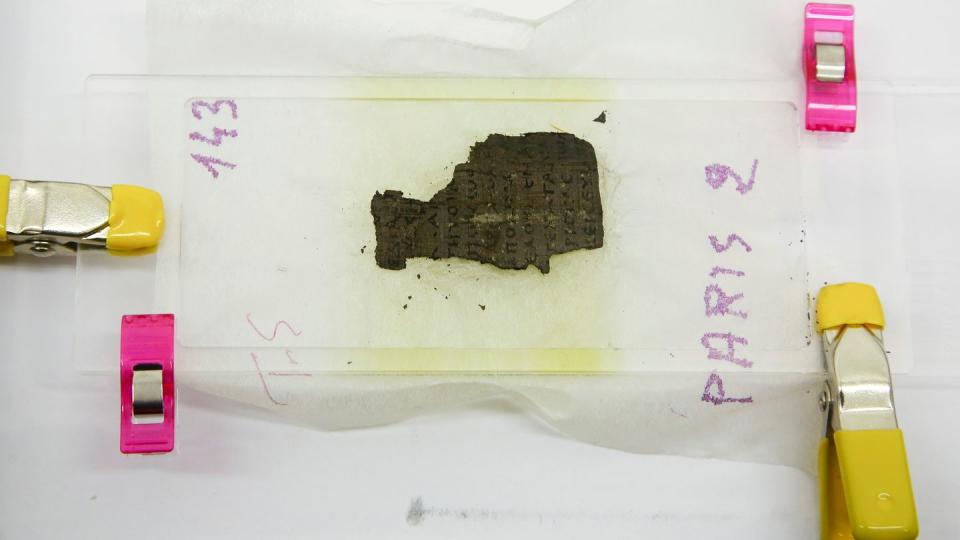Mt. Vesuvius Carbonized This Ancient Scroll. Now, We Can Finally Read the First Word.

The Herculaneum Scroll was discovered in the 1700s. It had been buried in volcanic ash from Mount Vesuvius, which carbonized the scrolls and made them impossible to open.
The Vesuvius Challenge offers up $700,000 to anyone who can use technology to read the scroll’s contents.
In a breakthrough, the first word was finally read, and three smaller prizes were awarded.
Reading can be tough business. And it’s even trickier when the words you want to read are written on a nearly 2,000-year-old scroll that was buried under volcanic ash and rock from the eruption of Mount Vesuvius.
But when a $700,000 reward is offered up to anyone able to decipher the scrolls, people are willing to put in the work. Since the announcement of the Vesuvius Challenge in March, progress has been made, and one word from the scroll can now fully be read. The word is “Porphyras,” which either means just “purple” as an adjective, or means “purple dye” or “cloths of purple” as a noun.
The ancient scrolls were originally housed in the library of a private villa near Pompeii, and the eruption of Vesuvius in 79 A.D. buried and carbonized the scrolls. They were then discovered under the 65 feet of volcanic mud in the 1750s. The ash preserved the scrolls enough that they have remained intact, while other scrolls from the same period have fully decayed. Any attempt to handle them physically, however, would disintegrate the scrolls.
With the uncertainty of how to approach the ancient papyri without destroying them looming over the artifacts, the scrolls have sat for years taunting researchers eager to know what they contain—whether that be poems, philosophy, or something else entirely. But the Vesuvius Challenge, led by the research of University of Kentucky professor Brent Seales, the financial backing of Nat Friedman (CEO of GitHub from 2018 to 2021) and investor Daniel Gross, has lit an exploratory fire by dangling prize money for anyone able to use technology to peer inside the scrolls.
The temptation has finally paid off, and the initial breakthrough has arrived. 21-year-old computer science student Luke Farritor just won $40,000 for figuring out how to read the first word anyone has been able to decipher off of that scroll in almost two millennia. The challenge team also doled out $10,000 to Casey Handmer for being the “first person to see ink and multiple letters within an unopened scroll.” His work became the basis for Farritor’s model. One additional $10,000 award was given to Youseff Nader for producing a clear image from inside the scroll.
Handmer says that X-ray CT imaging allowed for a wealth of data to be extracted from the scrolls, but he noted that he needed to write his own code and algorithms to separate the layers. With the scrolls rolled tightly, separating each layer of papyrus proves critical in placing letters and words in the proper location and context. Without understanding layering, the writing bleeds words together across multiple areas and becomes impossible to decipher.
“This has been the dream of many people since the scrolls were first discovered in the 1750s,” Friedman wrote on X, formerly Twitter. “It is also the result of 20 years of work from Dr. Brent Seales and his team at EduceLab, whose years of dedicated work have made this last mile possible.”
Hopefully, it won’t take another 20 years to decipher the rest of this scroll.
You Might Also Like
